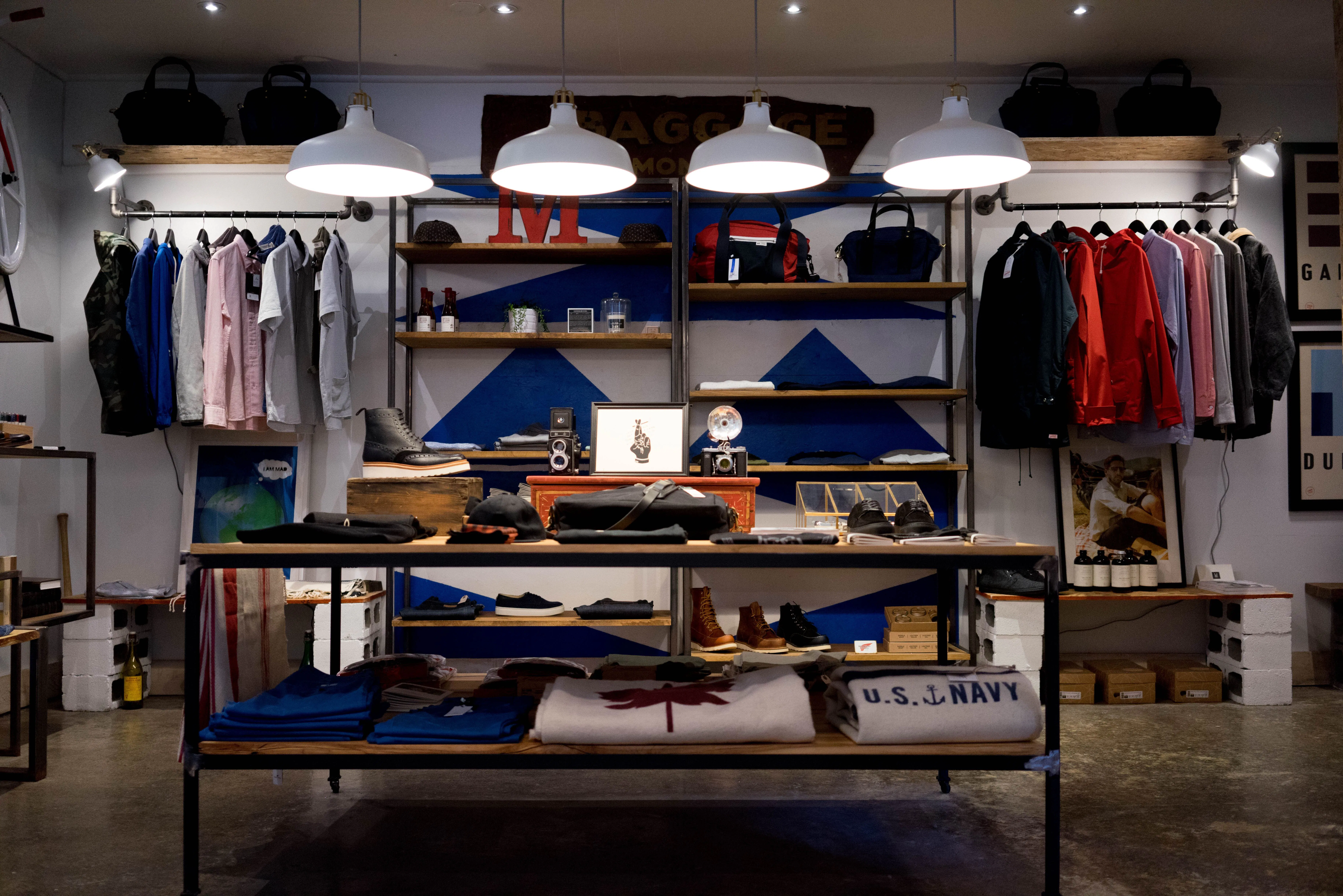7 Reasons Why We Love This Open-Source Shopify Plus Alternative for B2B Brands

By Foster Commerce
Jun 13, 2025

For brands with a straightforward business model, there are many advantages to using Shopify Plus.
With Shopify, it's simple to get a storefront up and running quickly using themes. There are a variety of apps to choose from that enhance a store’s functionality.
And Shopify users have access to a community of other store owners and developers.
However, for B2B businesses that have unique needs requiring custom solutions, other commerce platforms may offer an advantage.
Examples of custom solutions include ecommerce stores with subscriptions, custom checkout flows, special shipping rules, or a distinct sales process.
Additionally, a fully multilingual site may require custom solutions.
There are many open-source Shopify alternatives in the marketplace. But for mature B2B brands with complex requirements, we’re fans of Craft Commerce.
The upshot? Craft Commerce is affordable, totally flexible, and great for marketing.
Read on to learn why you might want to give Craft Commerce a serious look.
What is Craft Commerce?

Craft Commerce is the commerce engine developed by Pixel & Tonic, the makers of Craft CMS.
Craft CMS was developed with content creators in mind, providing unlimited creativity to marketers. In our opinion, Craft is one of the best-kept digital marketing secrets.
But the reason we love Craft's commerce engine is that it can be shaped according to unique business objectives.
Instead of a system's limited features dictating what’s possible for a business, the business shapes and grows the system.
That's why for brands that don’t easily “fit” on Shopify Plus, we recommend that they check out all that Craft Commerce has to offer.
To help, we've compiled a list of the top seven reasons why we think you'll love it.
1. An economical alternative
When shopping for quality we hold the perspective that it's often true you get what you pay for.
But in this case, considering how Craft can unleash growth for a business, we think this truism doesn't hold water.
Craft's Pro version of Commerce starts at $1,199 for the first year (including updates). After that, Craft Commerce's annual licensing fee is $299.
In contrast, Shopify charges a monthly subscription fee. Also, depending on your revenue Shopify may charge additional variable fees.
With Craft Commerce, there are no additional fees beyond the cost of plugins and charges associated with your chosen payment gateway.
And while you’ll have development costs with an open-source ecommerce platform like Craft Commerce, unless you use a theme directly off the shelf it's possible to have developer costs with Shopify Plus, too.
Pro Tip: When setting up an online store using Craft Commerce choose a development partner with expertise specific to Craft Commerce.
Inquire about your development partner's areas of coding expertise, and if they hold any special certifications. Then, ask questions about how they scope and develop your project.
For example, do they use a waterfall or agile method? The answer can impact how long it will take to get to launch.
Also, ask about their billing and how they account for scope changes. A flat fee vs. hourly can be a significant difference in terms of both project costs and outcomes.

2. Reliable extensibility
A clear benefit of Craft Commerce is its extensibility. It's not a problem to make your store as simple or as complex as you need.
Displaying prices in various currencies, handling a preferred payment processor, creating a unique transaction flow, or connecting your store to your shipping platform is relatively simple.
Craft has you covered with several pre-built integrations to choose from. Or, you can have your development partner create a bespoke ecommerce solution for your store.
The benefits of custom-built solutions to run an online store include increased security. This is because with custom builds you have more control over vetting your development partner's security protocols.
Also, your development partner should be able to create user-friendly features that fit your exact needs and budget.
Developing solutions to specific challenges will avoid the "bloat" that can often come with extra apps and plugins. Unnecessary code can slow down an ecommerce store — and over time can stretch your budget.
Targeted development also empowers brands to provide unique experiences that set them apart — a must-have in modern ecommerce.
Bottom line: Craft Commerce is a blank page that allows you to design exactly the look, feel, and functionality you want for your store.
Pro Tip: To take full advantage of Craft's versatility, choose a development team that can be your long-term strategic partner.
A reliable partner who is familiar with your brand can help you quickly pivot and adapt your website to meet changing customer preferences or market conditions.
Also, ask if they offer an affordable ongoing maintenance plan. Typically, maintenance plans cover the costs associated with site and server management.
Maintenance plans may also include things like hosting fees and regular security updates.
For example, our ongoing support service offers critical security patches and updates. In addition to site and server maintenance, it provides the same worry-free convenience as a Shopify plan.
3. Simplicity with composability
Modern ecommerce development is all about creating composable websites.
Yet all too often, “instant composability” really means “instant complexity.” That’s because composable platforms come with defaults that force merchants to adopt external systems that they may not need or want.
Craft Commerce reverses this trend with “instant simplicity” built into its base code as its default.
To help you understand how Craft Commerce defaults to “simple,” imagine a band’s soundboard, or mixer.
Just like a soundboard can have many inputs (a mic, bass guitar, drums, and keyboard) with one output (speakers), Craft can have many inputs (a product catalog, editorial content, a checkout system) with one output (your website).
Adding, removing, or swapping out features on a Craft Commerce store is like plugging in, unplugging, or swapping out instruments on a mixer.
So while Craft Commerce does default to having built-in inputs, say for example, a catalog, it can be easily swapped out for a catalog source you prefer, or removed altogether without risking harm to other parts of your website.
With Craft Commerce’s simple default build at the core, it’s easy to tie it to other APIs and services, for example, your preferred ERP.
This type of composability allows you to start with key requirements and then, as your business grows, feed in whatever other functionality or features you need.
In our opinion, this type of freedom and simplicity is what true composability is.
Pro tip: The possibilities are endless with a Craft Commerce store. When choosing a development partner, ask about how they help you map the features you need.
Determining a detailed project scope for your ecommerce build will reduce surprises in terms of time to launch, or budget.
Also, ask about how your development partner bills for their time. Often an hourly rate will give you more flexibility should you need to expand or reduce scope during a build.

4. Go headless (or not)
While the default build with Craft Commerce is monolithic using Twig templating, it's just as easy to turn a Craft Commerce website into a headless CMS.
Headless websites are another modern way to build B2B storefronts that complement composable systems and there are many benefits.
On a headless website, the front and back ends are two distinct parts of the website, tied together with an API.
Generally speaking, headless websites are a great advantage for marketers and customers alike.
For example, headless websites make omnichannel marketing possible. A marketer can upload content once, and then publish it in multiple places.
Headless websites are very fast, which makes them easier to use for admins, and great for a superior customer experience.
Merchants also have an advantage in using headless when it comes to accommodating growth.
For example, the flexibility of Craft Commerce paired with a headless infrastructure makes it easier for businesses to innovate customer experiences with fewer risks.
Pro tip: Stores built to be both composable and headless using Craft and Craft Commerce can accommodate business growth without fear of a re-platform.
Using an extensible and flexible platform gives merchants the opportunity to "future-proof" their custom websites, potentially saving time and money down the line.
5. Superior content marketing
Using tools that the Craft ecosystem provides supports B2B marketers to differentiate their brand.
Marketers can pair Craft Commerce with Craft CMS to design unique buyer experiences.
For example, marketers can customize fields, field layouts, variants, and checkout experiences. They can also integrate products with copy, video, imagery, or graphics.
This allows marketers the freedom to create experiences unique to their brand and support customers in their buying journey.
When B2B buyers have quality information about products, it removes friction in the purchasing process. And presenting that information in a unique way makes a brand memorable.
Finally, Craft Commerce allows site admins to see a preview of products before going live. It also has a user-friendly dashboard from which to manage content creation, review, and editing.
Pro tip: When vetting developers for your project, ask how they handle content modeling.
Content modeling is the process of defining the types of content and fields you need. It also addresses how content is structured on a site to optimize it for users and search.
In addition, if you're migrating content, also ask developers how they will handle that migration for you.

6. Excellent localization
If you have a need for localization, Craft has you covered.
When you pair your Craft Commerce store with Craft CMS, you'll be able to have an unlimited number of domains or subdomains for one website, with significant advantages for SEO and marketers.
Each subdomain can have a specific language, location, and currency as required.
In addition, Craft allows you to have multiple subdomains accessible behind one login. Having a single place to manage data and content using one login removes the headache of having multiple platforms to manage.
Creating one source of truth for marketing teams removes the need to toggle between different platforms, saving significant time and effort.
Pro tip: In addition to localization there are other reasons a brand might benefit from a multi-site website.
A brand can benefit from having multiple subdomains within its website if there are distinct parts of the business. For example, a company can have a subdomain for each part of its business, for example separate B2C and B2B storefronts.
Benefits include one overarching brand with sub-brands that each have a unique character, purpose, and audience.
7. SEO
As B2B businesses seek to differentiate themselves in the marketplace, they will look to content marketing as a solution.
The often unseen partner to good content marketing is quality on-page, off-site, and technical SEO. Poor SEO in any one of these domains can not only damage a business but shut it down altogether.
Craft makes it easy to dial in your on-page SEO. It does this by allowing you to design your business around your content needs.
As mentioned above, B2B businesses can tie Craft CMS to Craft Commerce. Craft CMS gives marketers the ability to use custom fields that are friendly to SEO, like alt-tags and meta descriptions, as well as integrate content with product pages.
But you can also add a blog to your store and an unlimited amount of general pages to start creating unique, SEO-optimized content that buyers are looking for.
With a good understanding of the desired content strategy and using tools in the Craft ecosystem, developers should be able to partner with B2B merchants to optimize this aspect of SEO for a website.
Pro tip: Technical SEO is an equally important aspect of an effective content marketing strategy. Ask your development partner to explain how they ensure your store is optimized from this perspective, too.

The Foster Commerce Layer
At this point, we hope you're wondering how you can learn more about building a store with Craft Commerce!
We’re experts in Craft Commerce and we want to help you get started. In addition to doing builds from the ground up, we do site migrations.
We have several pre-engineered ecommerce solutions as part of what we call the Foster Commerce Layer. Our cost-effective, ready-made software can save time and resources for a custom build.
After site launch, we remain dedicated partners to our clients. Some of them have been with us for over a decade because of the excellent ongoing strategic support and maintenance we provide.
Finally, if you're keen on bringing an in-house team up to speed with Craft CMS and Craft Commerce, we provide education and coaching, too!
Contact us for a free consultation. We'd love to learn what vision you have for your ecommerce business and how we can help.
*Hero photo by Katrin Bolovtsova on Pexels